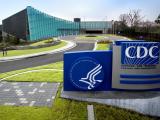May 23, 2008 (CIDRAP News) Federal agencies that play key food safety roles recently held a public meeting to clarify the obstacles public health officials encounter in investigating foodborne disease outbreaks and to build support for measures to improve the process.
The meeting was held in St Louis on May 15 and was followed the next day by a tabletop exercise that simulated a multistate Escherichia coli outbreak involving ground beef. The 2-day event was attended by officials from the US Department of Agriculture's Food Safety and Inspection Service (FSIS), the Food and Drug Administration, and the Centers for Disease Control and Prevention, plus state and local public health officials, food industry groups, university researchers, and consumer groups.
The FSIS had announced that it would explore how to improve outbreak investigations last October, as it unveiled measures to address a spike in E coli outbreaks linked to ground beef.
David Goldman, assistant administrator in the FSIS office of public health, told CIDRAP News that the 2-day event sparked robust discussions about a range of topics. "What we wanted the presenters to do was be candid about the problems they confront," he said.
All outbreaks start locally
One of the major themes that participants emphasized was the important role of local public health officials, Goldman said. "Outbreak investigations can be quite complex, but everything starts locally with one or two cases," he said.
For example, he said the group learned that local authorities need to know more specific details when food products are recalled in the event of an illness outbreak. "Sometimes they don't hear from federal or state officials" and don't know what has been recalled, he said.
Craig Hedberg, PhD, associate professor of environmental health sciences at the University of Minnesota School of Public Health in Minneapolis, attended the meeting and took part in the tabletop exercise. He said the discussions were useful for charting the patterns that have occurred in outbreak investigations and fleshing out plans for improving them.
Hedberg also said a focus on the role of local officials was a useful outcome of the meeting. "People from local departments describe how they feel left out of larger multistate outbreak investigations, but local agencies are the ones interviewing the cases," he said. "And sometimes it's not apparent why the case should be at the top of their priorities."
Some participants shared their frustrations about difficulties in getting information from regulatory agencies and industry. "Some of the information can't be shared readily due to the laws that regulatory agencies operate under," Hedberg said.
(Problems in the dissemination of food safety information were the topic of a lengthy report released yesterday by a group called the Food Safety Research Consortium. See May 22 story link below for more information.)
Other issues that were raised at the meeting, Hedberg said, included the need to improve methods for assessing case-patients' food exposures and the view of some experts that food recalls, as currently administered, don't convey an adequate level of warning to consumers.
Whether a food recall is voluntary or mandatory is largely a technical issue, he said. However, focusing on whether a recall is voluntary or mandatory can lead some of the public to think that the associated outbreak isn't an important public health problem.
Recall messages could be better crafted to reflect more clearly that the recalled product is harmful and should not be consumed, Hedberg said. "The focus should be on the desired behavior of the consumer."
Coalition offers resources
Tim Jones, MD, state epidemiologist for the Tennessee Department of Health, attended the meeting and gave the group an overview of projects launched by the Council to Improve Foodborne Outbreak Response (CIFOR). The group is led by the Council of State and Territorial Epidemiologists and the National Association of County and City Health Officials. It receives funding from the CDC and collaborates with a host of other federal agencies and public health organizations.
Jones said CIFOR, now in its third year, has established an online source for questionnaires and outbreak training resources, has developed guidelines for multistate outbreak investigations, and is working on several other initiatives.
CIFOR's work is one example of how seriously public health groups are taking the need to improve outbreak investigations, Jones said. Others include the EpiReady program, which teaches authorities how to conduct investigations, and various tabletop exercises.
"Just the fact that the meeting was held was an important sign that the issue is being taken seriously," he said.
Goldman said the tabletop exercise afterward was useful because it raised all of the concerns that had been discussed during the meeting. "And people who were unfamiliar with outbreak investigations learned a lot about them. It illuminated the problems and the obstacles," he said.
The FSIS plans to publish reports on the meeting and exercise within the next few months, he said.
Hedberg said that though many important issues were raised at the meeting, it's clear that quick fixes are unrealistic. "Part of it is changing people's normal work patterns. A lot of it is culture change that has to occur across the system," he said. "Everyone is in theory committed to better communication and more transparencythe devil is in the details."
See also:
Apr 25 USDA press release on outbreak investigation meeting
May 22 CIDRAP News story "Experts propose steps to ease food safety info flow"
Oct 23, 2007, CIDRAP News story "USDA announces plans to reduce E coli contamination in ground beef"
CIFOR Web site





















